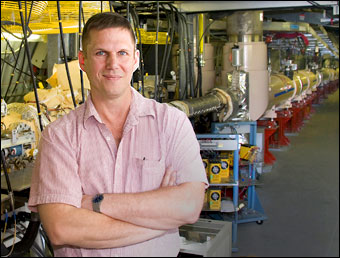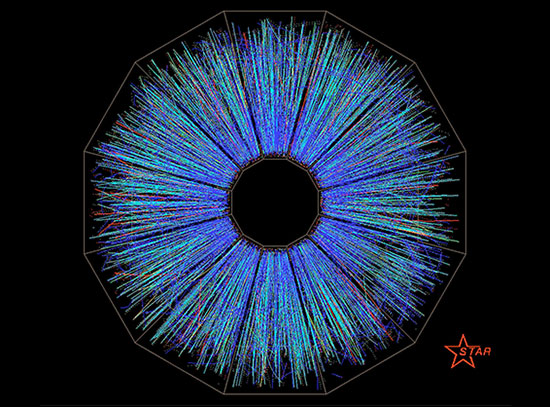Michael Blaskiewicz Awarded Tenure
September 29, 2008
Brookhaven Science Associates (BSA) granted tenure effective August 1 to five Brookhaven scientists: Michael Blaskiewicz, Collider-Accelerator Department (C-AD); Jamie Dunlop, Physics Department; Alexei Fedotov, C-AD; Etsuko Fujita, Chemistry Department; and Huilin Li, Biology Department. Tenure appointments are granted by action of the BSA Board after a rigorous selection procedure overseen by the BSA Science & Technology Steering Committee. In making tenure decisions, the BSA Board is advised by members of the Brookhaven Council, an elected body that advises the Director on matters affecting the scientific staff. This is the first in a series of profiles.

Michael Blaskiewicz
Michael Blaskiewicz, a physicist in the Collider-Accelerator Department (C-AD) has won tenure based on his significant contributions to Brookhaven's mission of designing, constructing, and operating complex user facilities and his extensive experience in the field of accelerator physics.
"Michael has established himself as an outstanding accelerator physicist whose original scientific work, publications, and leadership are internationally recognized," said Derek Lowenstein, C-AD Chair. "He has a broad knowledge of accelerator physics, as well as a deep understanding of the technology constraints in applying it to operating machines. His work is characterized as sophisticated, innovative, accurate, and reliable, and he is regarded as a world expert on issues of beam stability in high-intensity particle accelerators."
Blaskiewicz received his Ph.D. in physics from Cornell University in 1991. Immediately following graduation, he joined Brookhaven as a Fellow in Accelerator Technology at the Alternating Gradient Synchrotron (AGS). He was hired as an assistant physicist in 1992, promoted to associate physicist in 1994, and then promoted to the rank of physicist in 1996. In 1999, he was made a physicist with continuing appointment.
Blaskiewicz has contributed to the design, analysis, and operation of four C-AD facilities and projects: the AGS Booster, the AGS upgrade to function as a high-intensity accelerator and as an injector for the Relativistic Heavy Ion Collider (RHIC), the accumulator ring of the Spallation Neutron Source, and RHIC.
Recently, Blaskiewicz designed a groundbreaking way to achieve higher collision rates at RHIC through a beam-feedback technique known as stochastic cooling. Although this approach has been used in specialized, low-energy accelerators, it has never been made to work at high energy with tightly bunched beams such as RHIC's - until now.
"This extraordinary achievement has earned Michael worldwide recognition for the first ever success of cooling beam in a high-energy collider, and justifies by itself promotion to tenure," Lowenstein said.
2008-900 | INT/EXT | Newsroom









